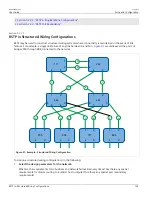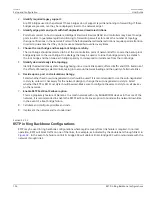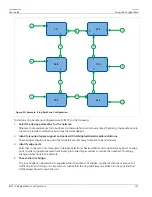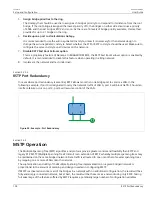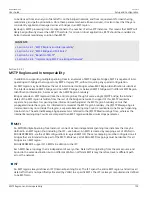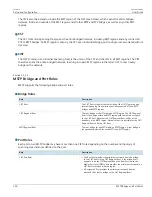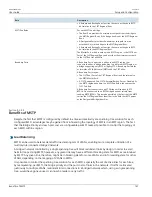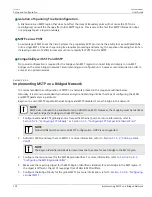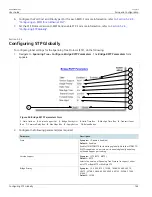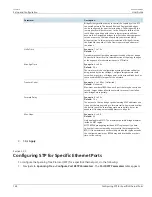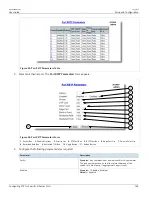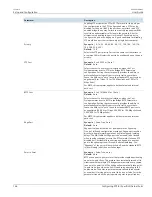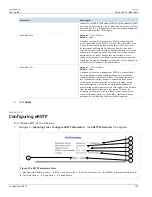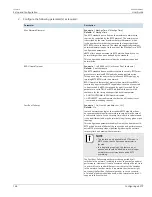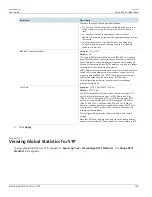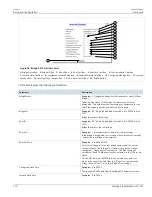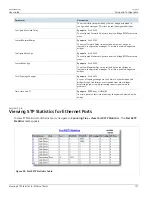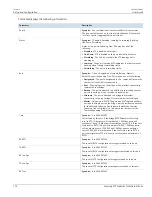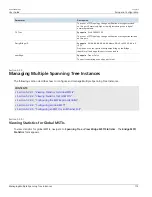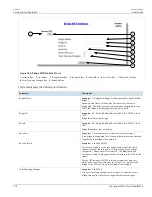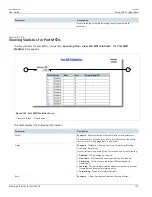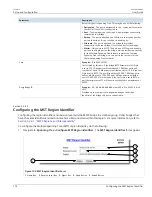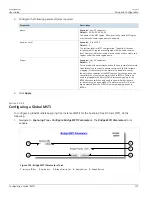
Chapter 5
Setup and Configuration
RUGGEDCOM ROS
User Guide
162
Implementing MSTP on a Bridged Network
Isolation of Spanning Tree Reconfiguration.
A link failure in an MSTP region that does not affect the roles of Boundary ports will not cause the CST to be
reconfigured, nor will the change affect other MSTP regions. This is due to the fact that MSTP information does
not propagate past a region boundary.
MSTP versus PVST
An advantage of MSTP over the Cisco Systems Inc. proprietary PVST protocol is the ability to map multiple VLANs
onto a single MSTI. Since each spanning tree requires processing and memory, the expense of keeping track of an
increasing number of VLANs increases much more rapidly for PVST than for MSTP.
Compatibility with STP and RSTP
No special configuration is required for the bridges of an MST region to connect fully and simply to non-MST
bridges on the same bridged network. Careful planning and configuration is, however, recommended in order to
arrive at an optimal network.
Section 5.2.3.4
Implementing MSTP on a Bridged Network
It is recommended the configuration of MSTP on a network proceed in the sequence outlined below.
Naturally, it is also recommended that network analysis and planning inform the steps of configuring the VLAN
and MSTP parameters in particular.
Begin with a set of MSTP-capable Ethernet bridges and MSTP disabled. For each bridge in the network:
NOTE
MSTP does not need to be enabled to map a VLAN to an MSTI. However, the mapping must be identical
for each bridge that belongs to the MSTP region.
1. Configure and enable STP globally and/or for specific Ethernet ports. For more information, refer to
Section 5.2.4, “Configuring STP Globally”
or
Section 5.2.5, “Configuring STP for Specific Ethernet Ports”
.
NOTE
Static VLANs must be used in an MSTP configuration. GVRP is not supported.
2. Add static VLANs and map them to MSTIs. For more information, refer to
Section 5.1.5.2, “Adding a Static
.
NOTE
The Region Identifier and Revision Level must be the same for each bridge in the MST region.
3. Configure the revision level for the MST Region Identifier. For more information, refer to
“Configuring the MST Region Identifier”
.
4. Make sure the read-only digest for the MST Region Identifier is identical for each bridge in the MST region. If
the digest is different, the set of mappings from VLANs to MSTIs differs.
5. Configure the Bridge Priority for the global MSTI. For more information, refer to
.








